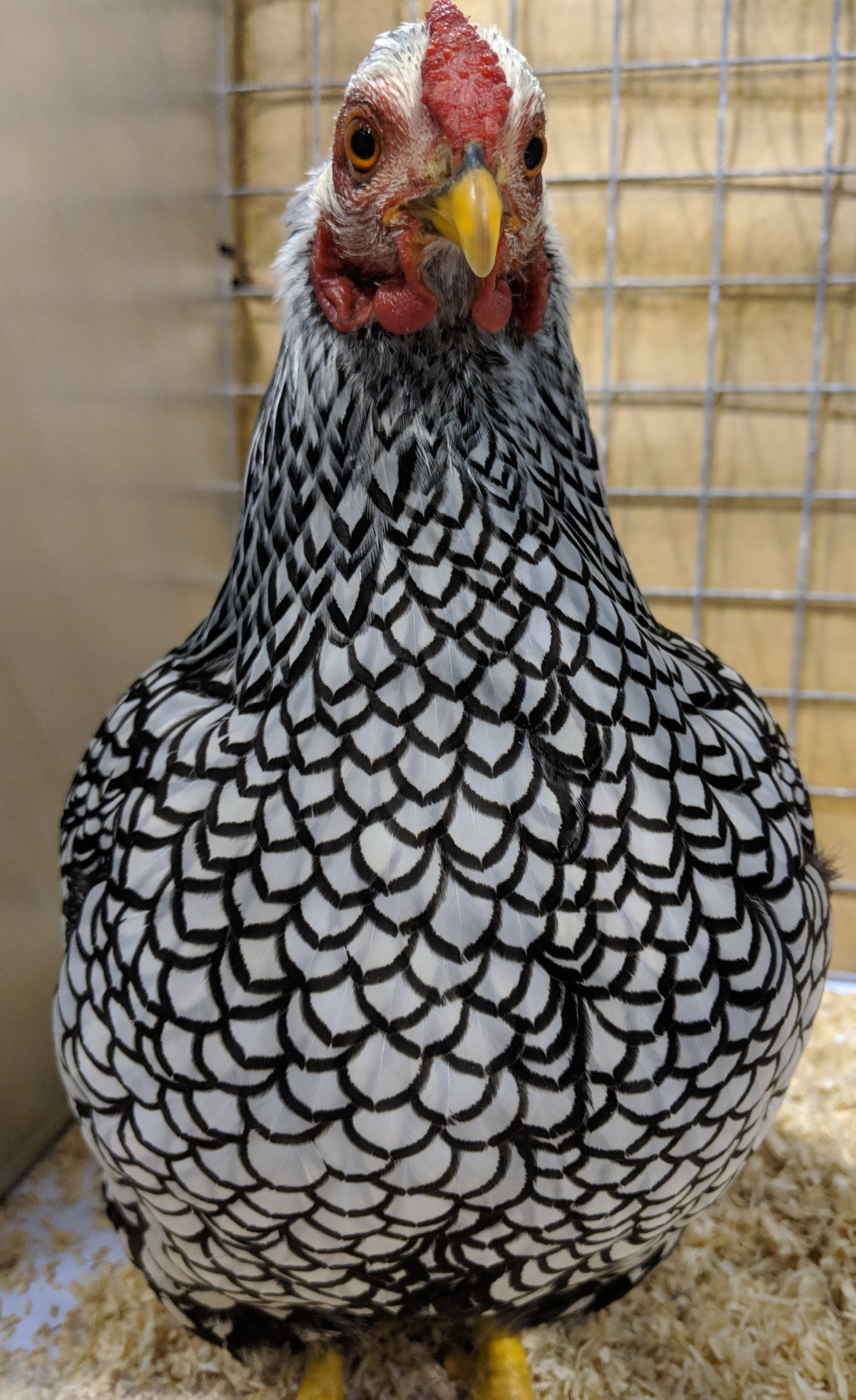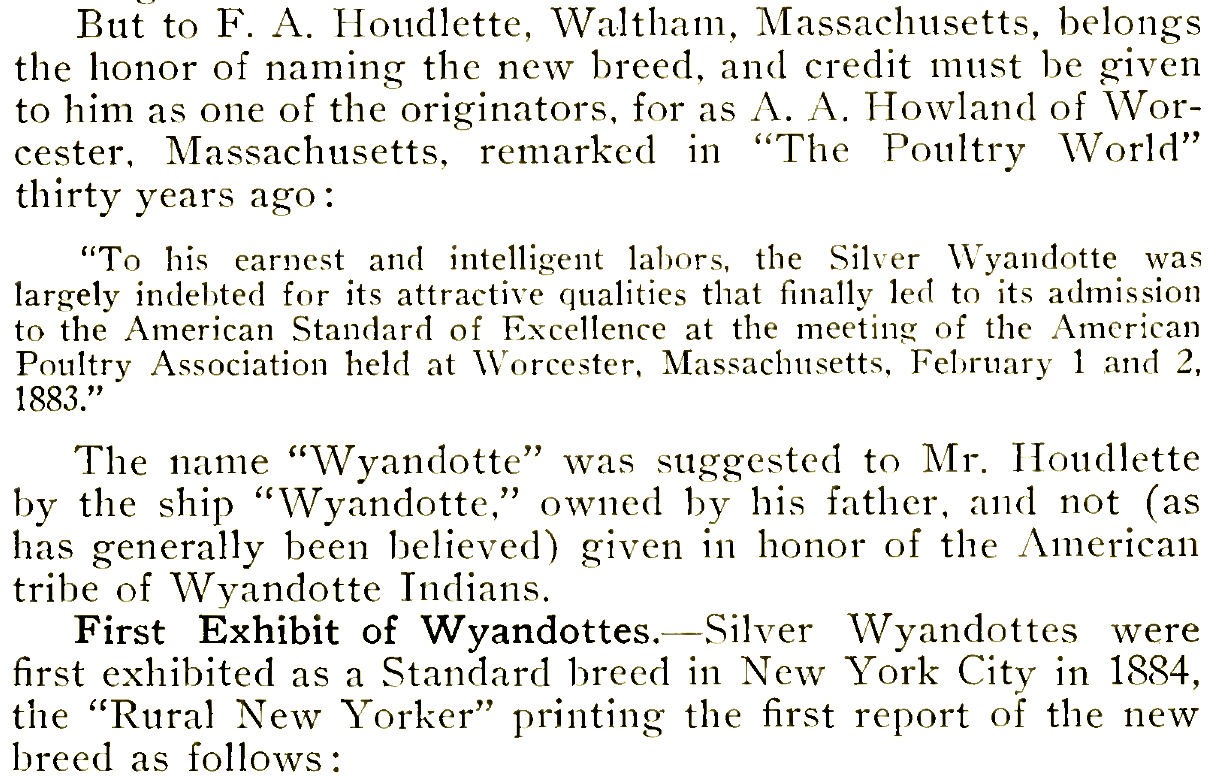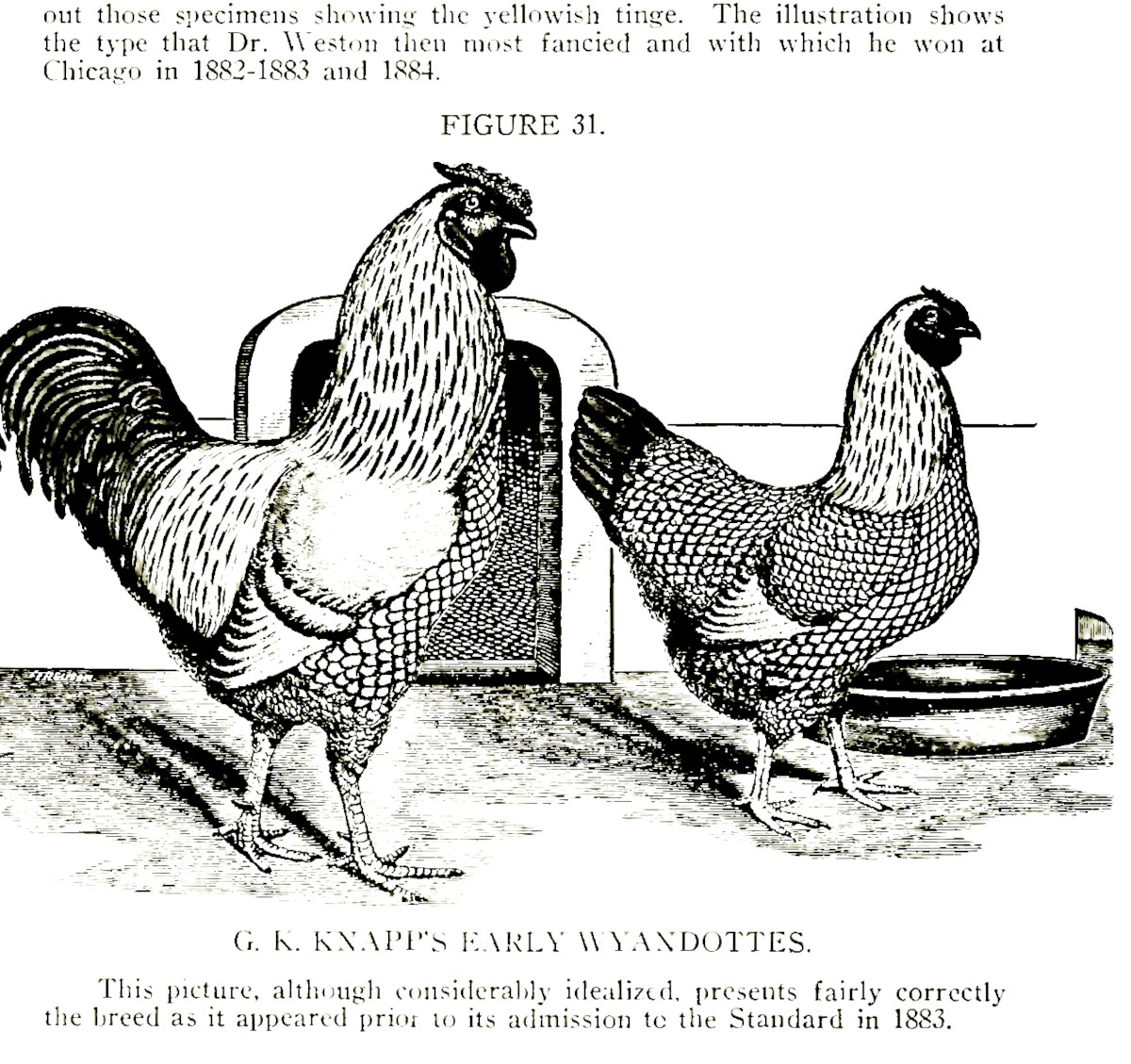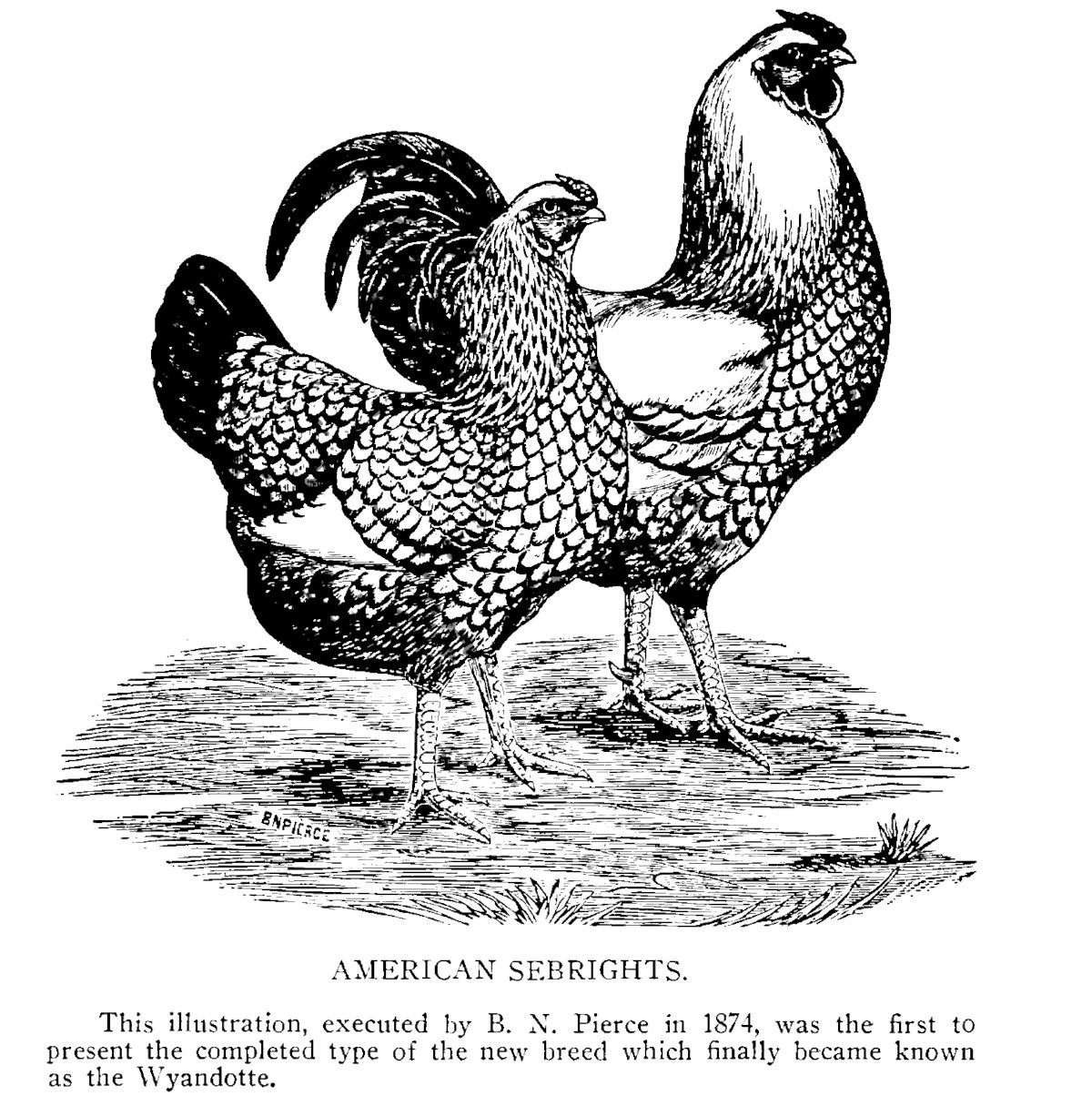The origin, history and development of the Wyandotte chicken.

The Wyandotte breed came into being on January 31st, 1883 with the first Standard.
Table of Contents
In the proceedings of the Ninth Annual Meeting of the American Poultry Association held at Worcester, Mass., January 31st, 1883, the following reference to the admission of Wyandottes appeared on page 21:
"On the so-called American Sebright variety, the Committee reported in favour of their admission and recommended that a committee be appointed to prepare a Standard to be represented at the next session of the American Poultry Association and that the name of the breed be 'Wyandottes.'
The report was adopted and the following committee appointed to prepare the Standard : F. A. Houdlette, G. D. Millington and Rev. D. D. Bishop."
How the Wyandotte got it's name:
In the Wyandotte breed standard book from the APA in 1919 the following is recounted:
But to F. A. Houdlette, Waltham, Massachusetts, belongs the honour of naming the new breed, and credit must be given to him as one of the originators, for as A. A. Howland of Worcester, Massachusetts, remarked in "The Poultry World" thirty years ago :
"To his earnest and intelligent labours, the Silver Wyandotte was largely indebted for its attractive qualities that finally led to its admission to the American Standard of Excellence at the meeting of the American Poultry Association held at Worcester, Massachusetts, February 1 and 2, 1883."
The name "Wyandotte" was suggested to Mr. Houdlette by the ship "Wyandotte" owned by his father, and not (as has generally been believed) given in honour of the American tribe of Wyandotte Indians.
Below: Here is the text from the book.

It would appear that the commonly held belief of how the Wyandotte was named is a untruth.
Below: Silver Wyandottes were first exhibited as a Standard breed in New York City in 1884, the "Rural New Yorker" printing the first report of the new breed as follows.

Our sources for the Wyandotte history:
- Homer W. Jackson, J. H. Drevenstedt, F. L. Piatt, A. C. Smith from the Wyandotte breed standards book from 1919,
- Wyandottes by Joseph wallace from 1891,
- The Wyandotte fowl by the editors of poultry monthly from 1884,
- Standard bred Wyandottes, mixed authors, 1902,
- Wyandotte culture from 1886 by B.N. Pierce.
- Wyandottes in colours and how to judge them by the "Inland Poultry Journal" from 1908.
If you would like PDF's of these works please contact me.
History origin and development of the Wyandotte chicken.
The Silver Laced Wyandotte is the parent variety of the Wyandotte family and the first to be bred.
It originated in New York State. It was first known as 'American Sebright' and 'Sebright Cochin.
Below: The American Sebright from the 1870's, The resemblance to the Wyandotte is clear to see.

The true origin is shrouded in mystery.
Mr. Ray's statement that the Wyandotte originated from the Sebright Cochin bred by him, is corroborated by L. Whittaker of North Adams, Michigan, who, in 1886, wrote to the Rev. Chas. L. Ayer as follows :
"Wyandottes in 1872 were known as Sebright Cochins. I first found them at Honeoye, N. Y. I thought at that time I could see all their future popularity and the result has proved my prediction true. In January 1877, I gave them the name of American Sebrights. "
The breed that was to become the Wyandotte was refused Admission to Standard in 1877. Mr. Whittaker failed in the attempt to have his American Sebrights admitted to the Standard of Excellence in 1877.
The name "Wyandotte" was not applied until they were admitted to the Standard in 1883.
The first type was the silver-laced, which was included in the American Standard of Perfection of the American Poultry Association in 1883
From the testimony and suppositions of experienced poultry breeders and authorities, it is evident, after sifting out the speculative theories advanced by some writers, that the ancestral blood of the Wyandotte fowl traced back to the Hamburg and the Dark Brahma.
The Dark Brahma and Spangled Hamburg’s were used by the originator of the 'American Sebright' was evidenced by the cropping out of the Hamburg comb and Dark Brahma colour markings in some of the earlier Eastern strains.
Below: The Sebright Cochin from 1873.

Golden Laced Wyandotte’s originated in Wisconsin and were added to the standards in 1888. They were produced by mating Silver Laced Wyandotte females with a cross-bred Partridge Cochin-Brown Leghorn cockerel.
Joseph McKeen of Wisconsin was the originator of the Golden Laced Wyandotte. In 1880 he crossed Silver Laced Wyandotte females with a large “Black Red” patterned fowl of unknown origin called the Winnebago. The variety was admitted to the American Standard in 1888.
The colour pattern of the Sebright Bantam has been more or less of an ideal for breeders of Silver and Golden Laced Wyandotte’s. It is one that should conform to the larger size of the fowl by having more sharply defined and wider black lacing to harmonise with the broader oval centre of the feather.
White Wyandotte’s came from sports of the Silver Laced in New York State and were added in 1888. The feather is important, especially in the White variety, where broad feathers and smooth plumage are characteristic of the Wyandotte.
Light coloured Rhode Island Reds laid the foundation of Buff Wyandotte’s for breed, type and colour and were admitted to the standard in 1893.
Black Wyandotte’s originated from black sports of the Silver Laced variety.
Partridge Wyandotte’s originated from the Partridge Cochin in 1893.
Silver Pencilled Wyandotte’s (1902)were produced blending two strains; one Partridge Wyandotte-Dark Brahma cross, the other, a cross of Silver Laced Wyandotte’s and Silver Pencilled Hamburg’s cross.
Columbian Wyandotte’s were named for the 1893 Columbian Exposition held in Chicago in 1893 but only added to the standard in 1905. This variety was produced by crossing a White Wyandotte and a Barred Plymouth Rock.
Blue Wyandottes are one of the most recent, only being added in 1977.
Wyandottes were taken to Britain in 1884 and exhibited at York in 1885.
